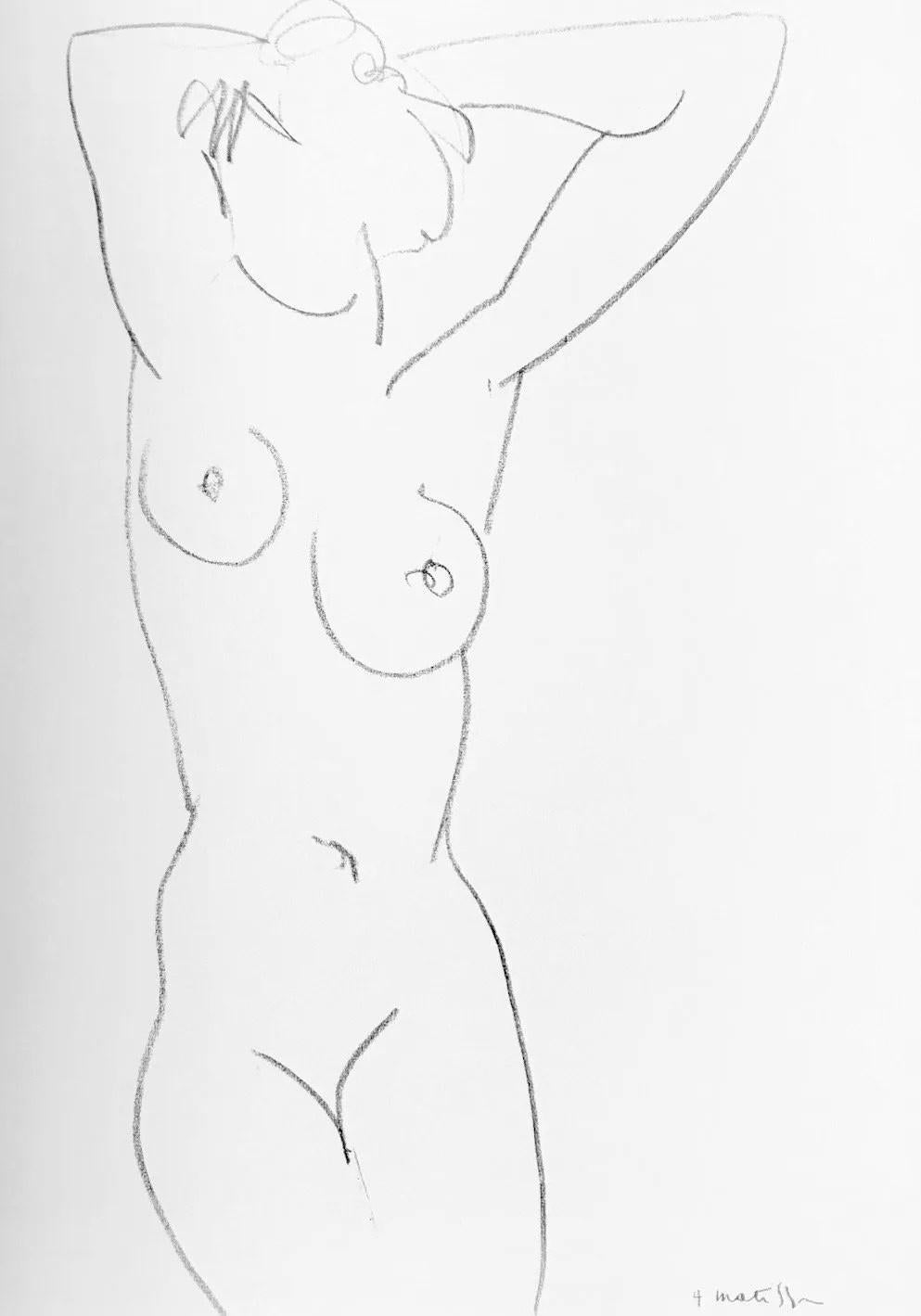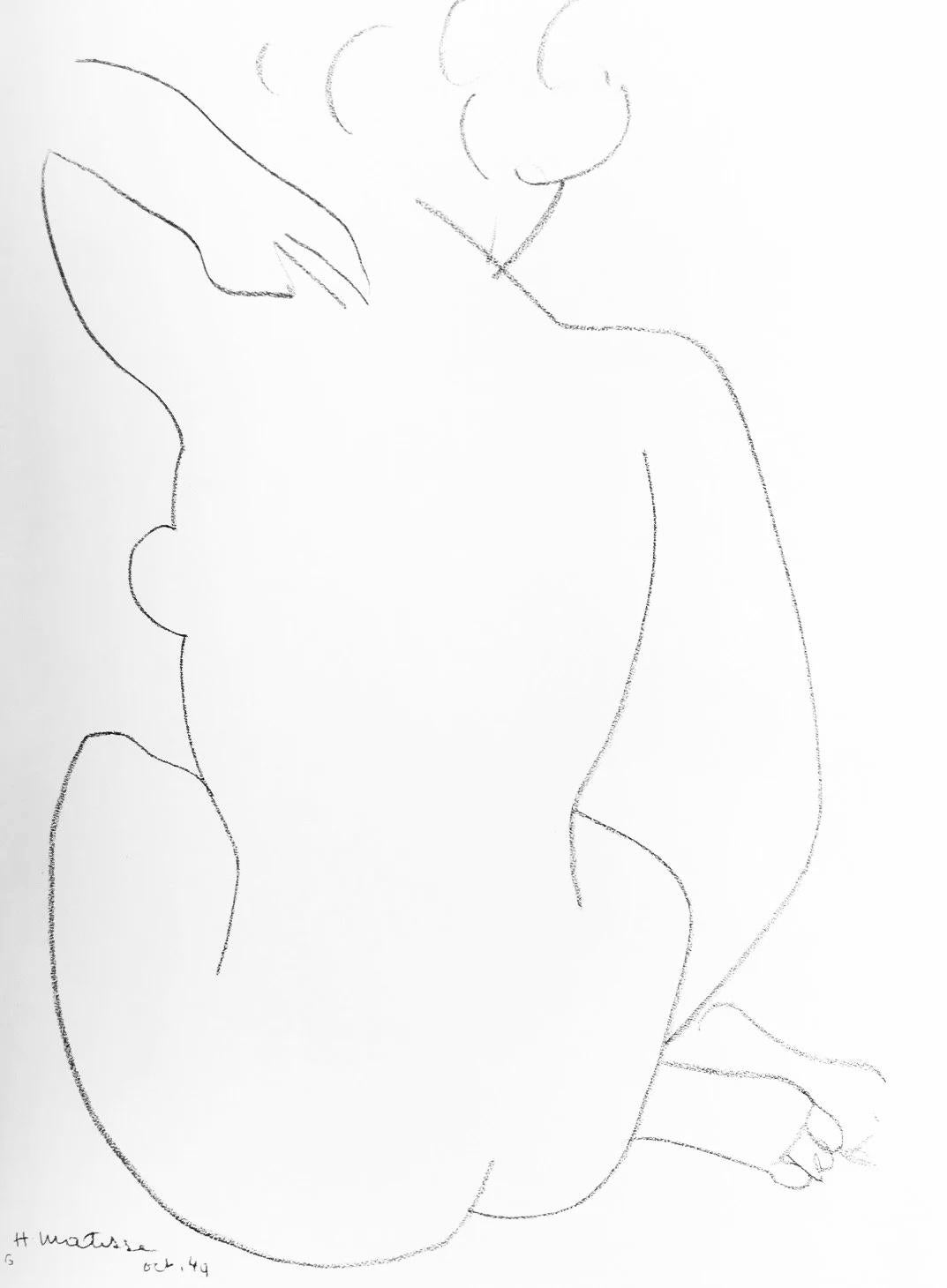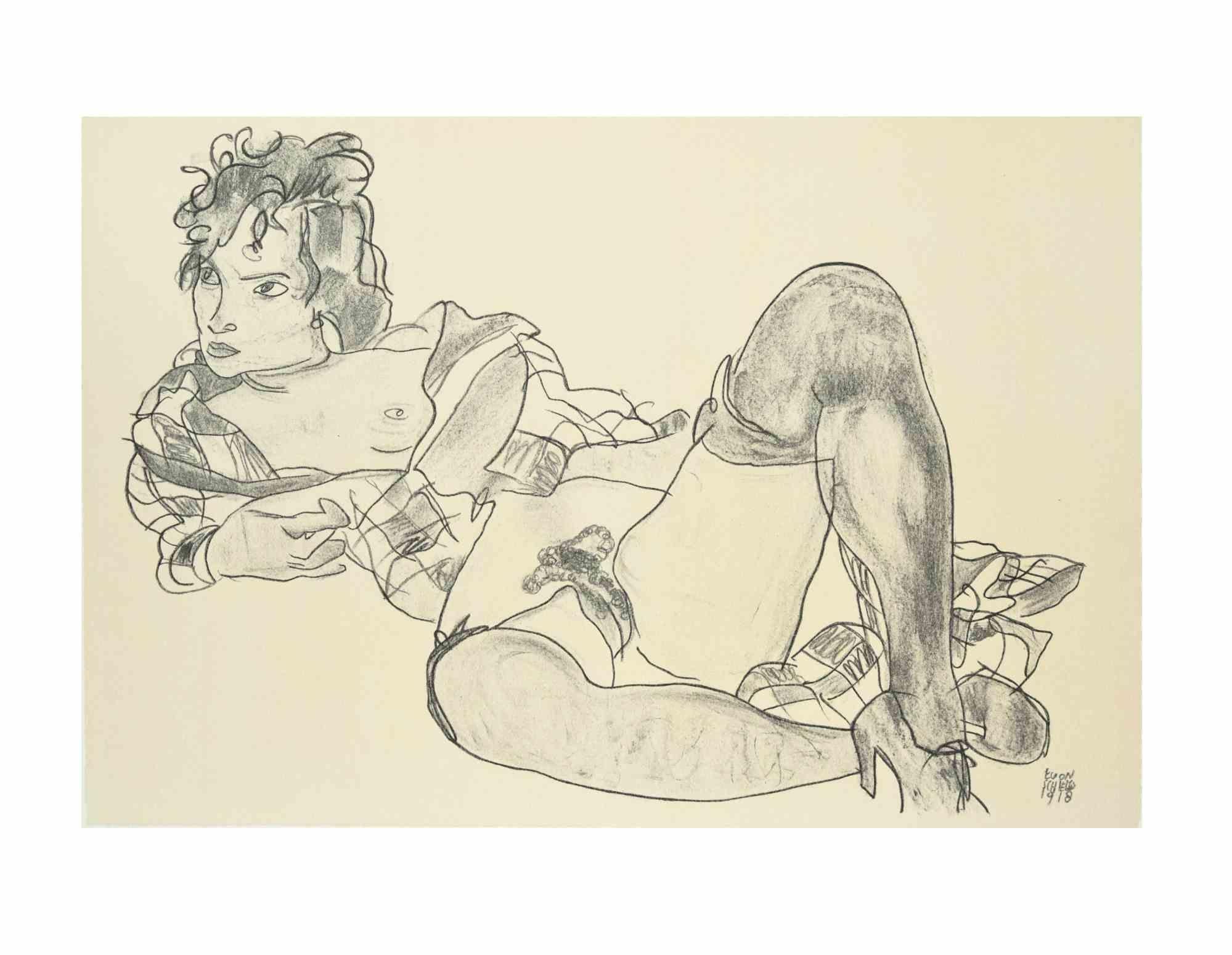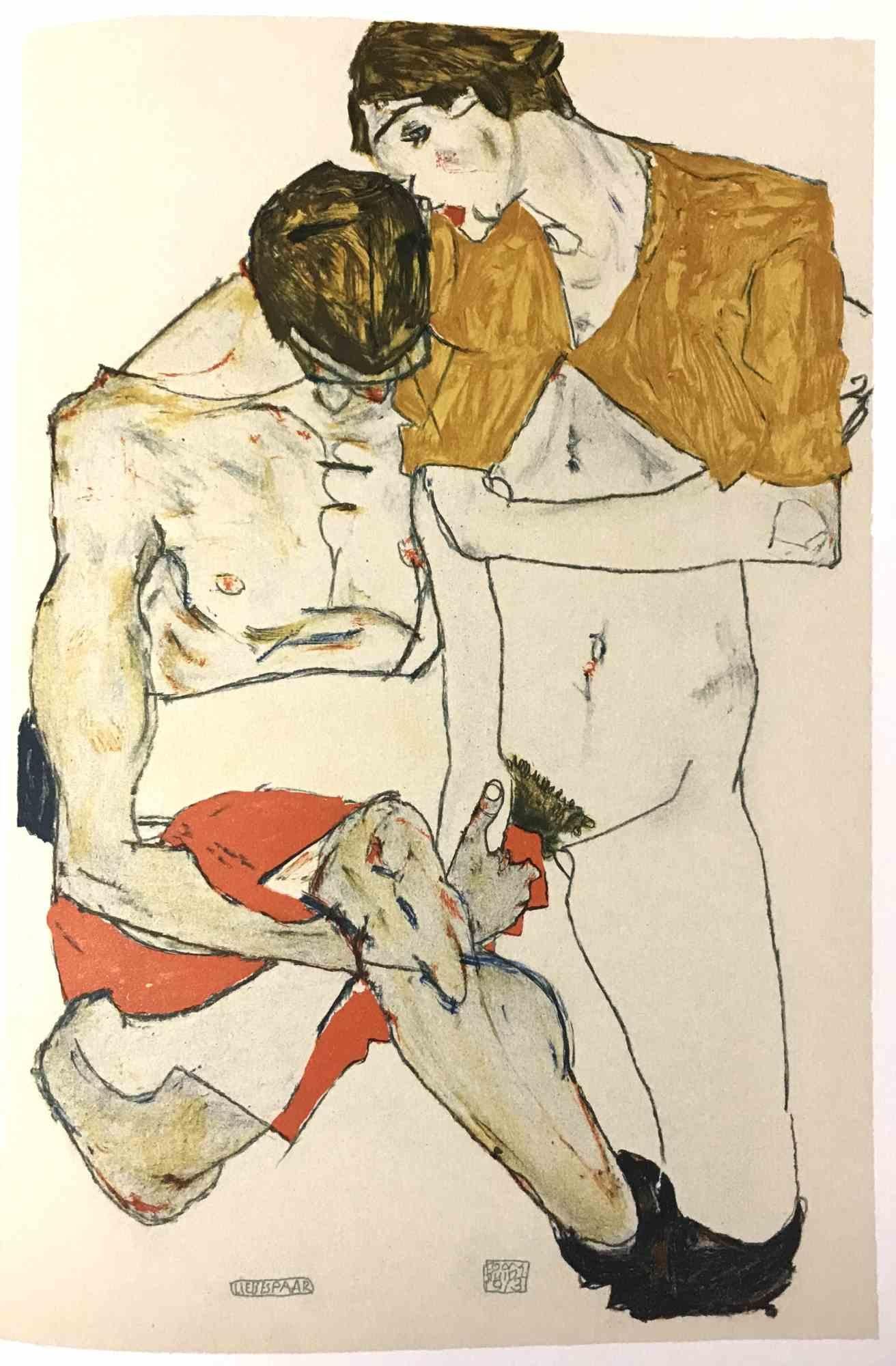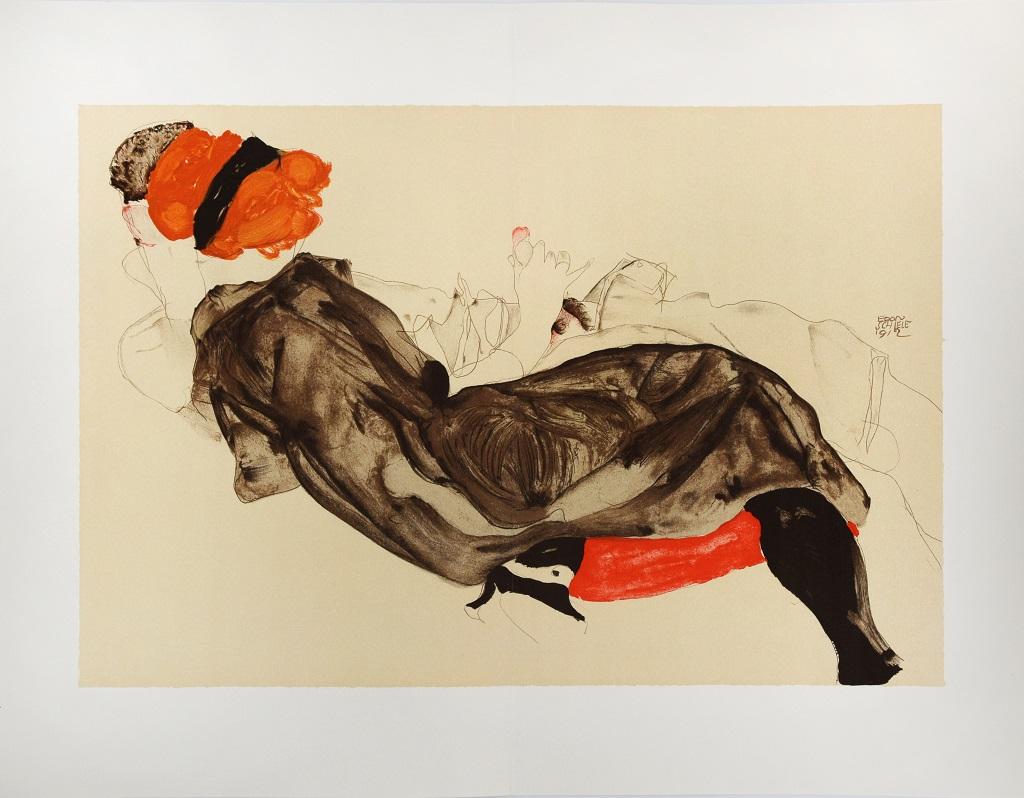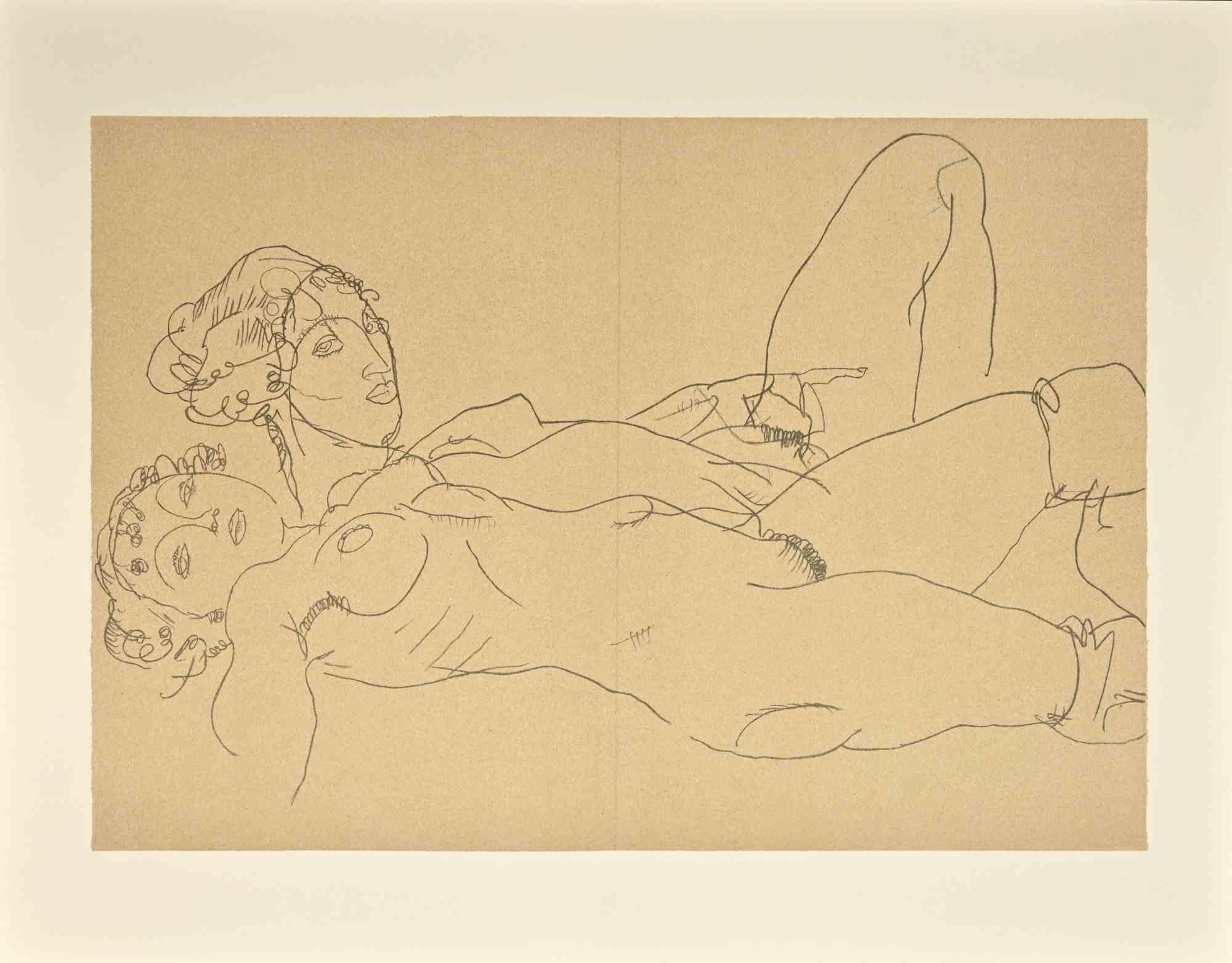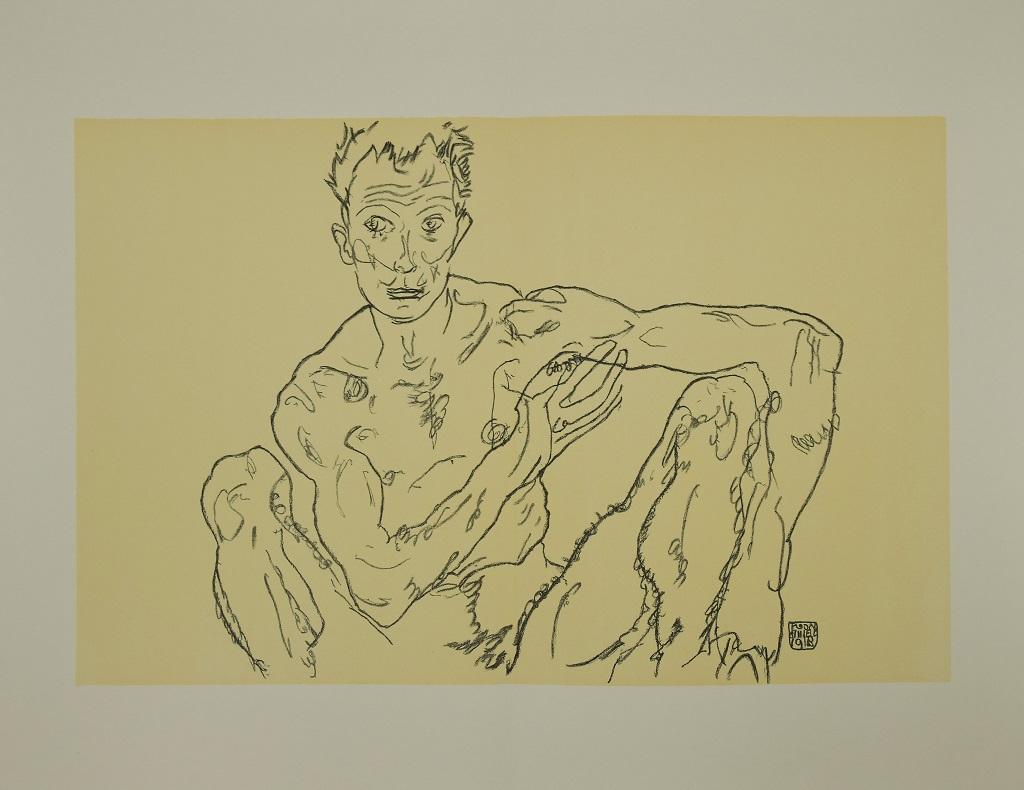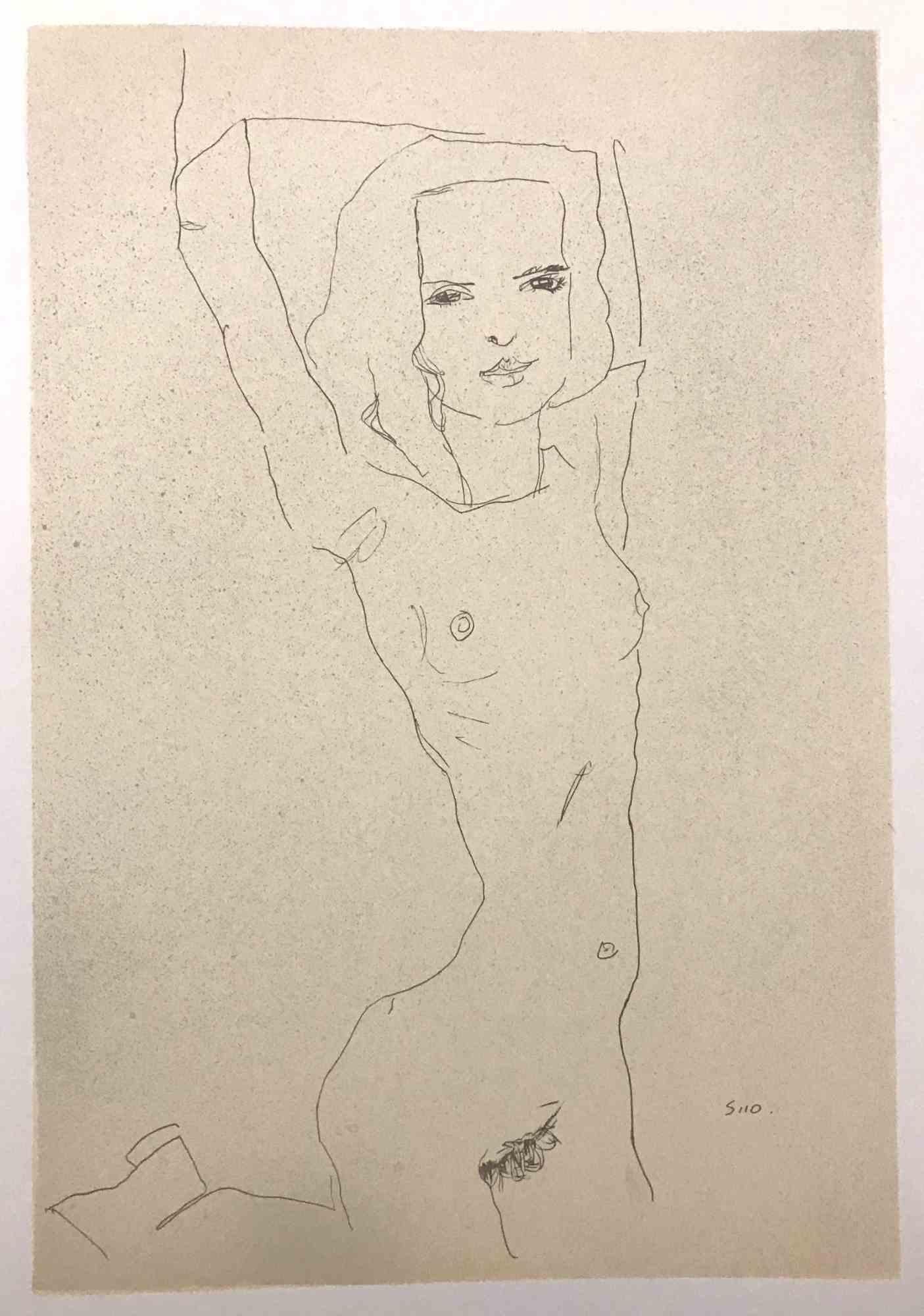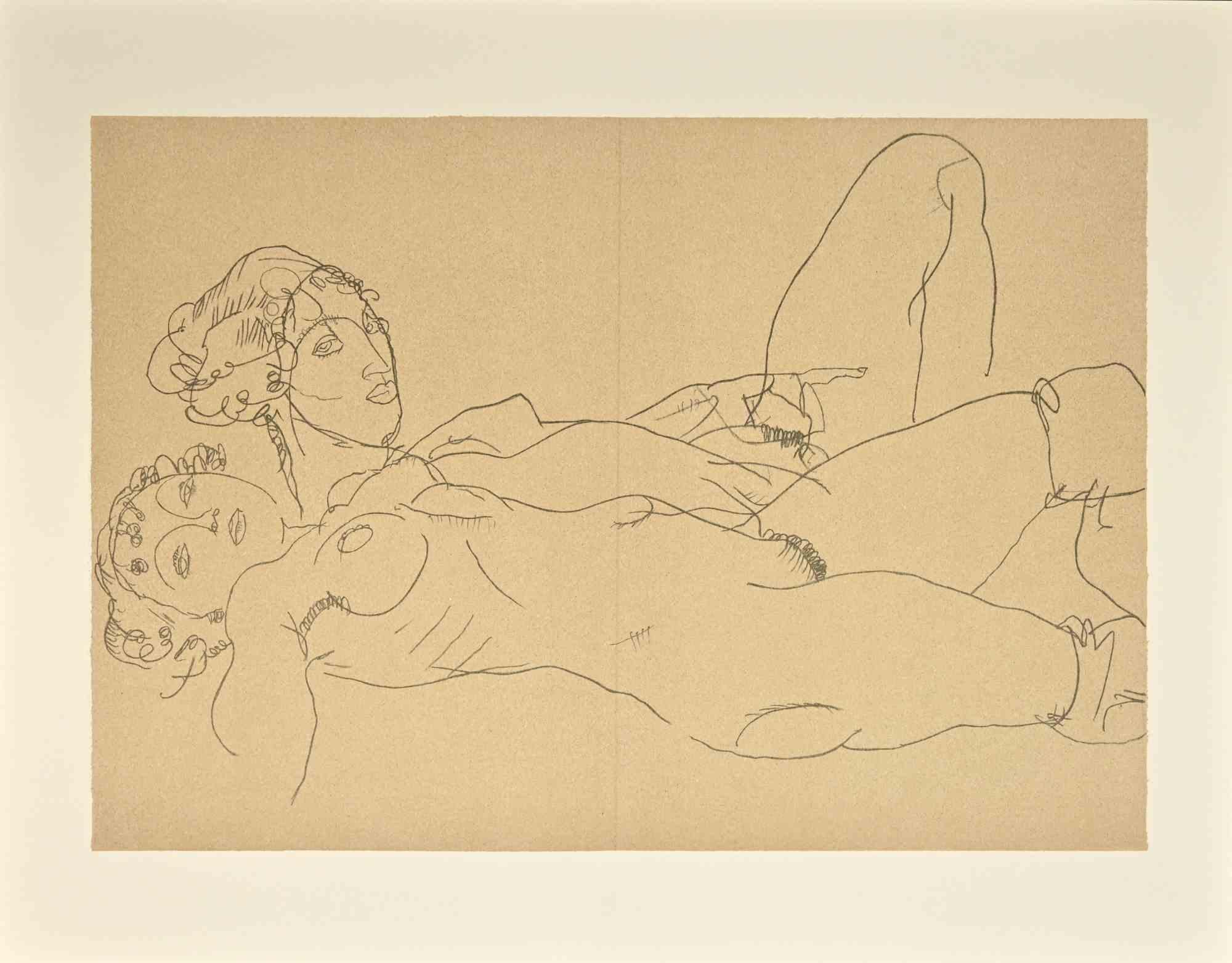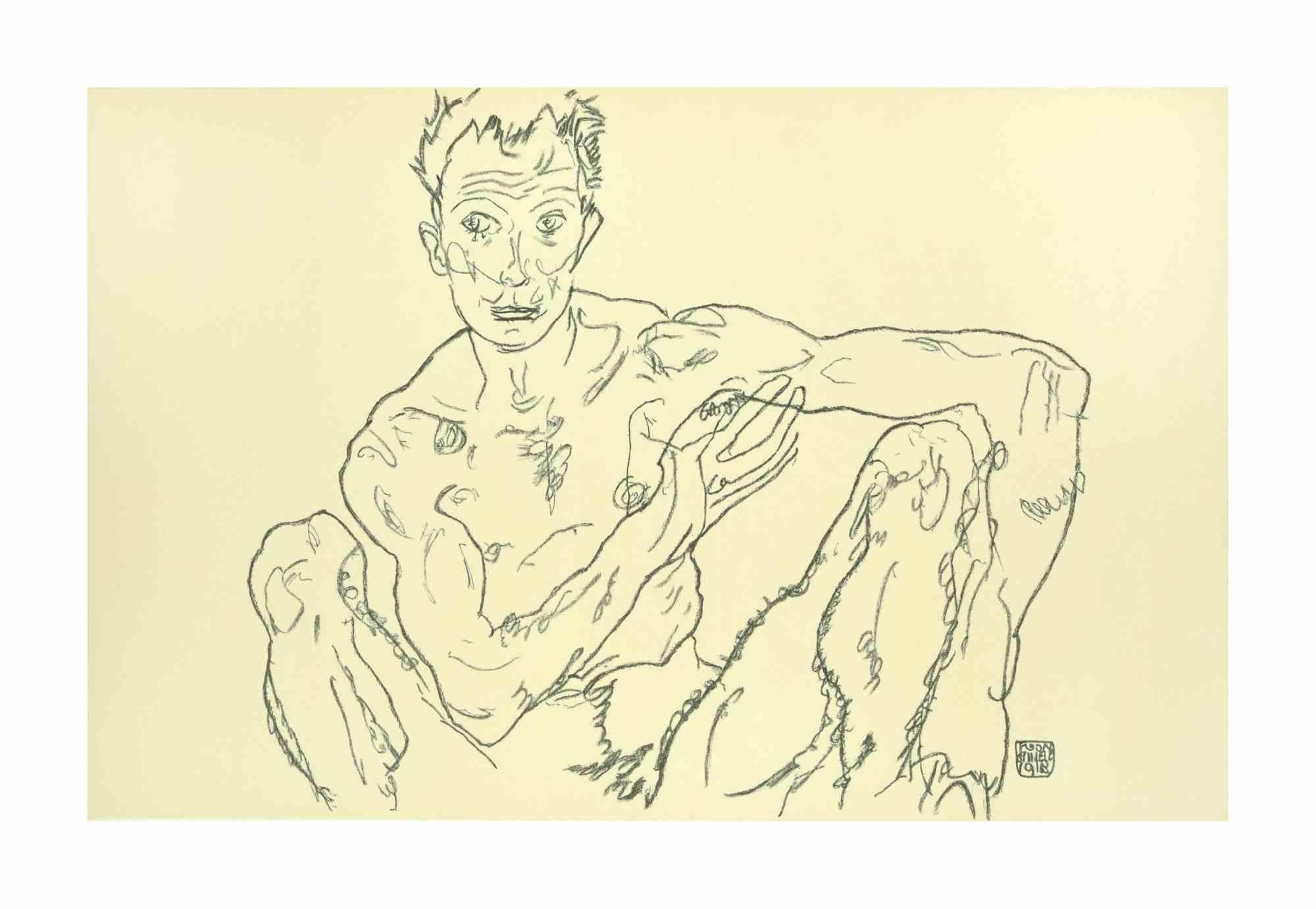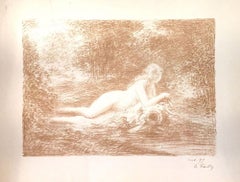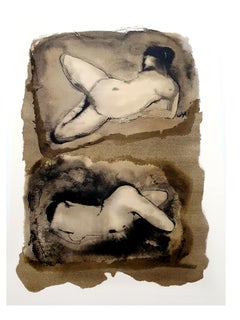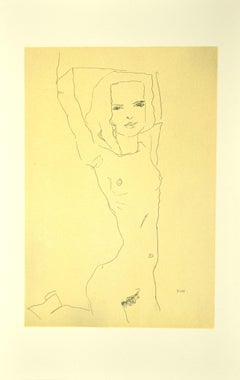
Nude Girl with Raised Arms - Original Lithograph after E. Schiele
View Similar Items
Want more images or videos?
Request additional images or videos from the seller
1 of 5
Auction endedBrowse Current Auctions
(after) Egon SchieleNude Girl with Raised Arms - Original Lithograph after E. Schiele2007
2007
About the Item
- Creator:(after) Egon Schiele (1890 - 1918, Austrian)
- Creation Year:2007
- Dimensions:Height: 19.69 in (50 cm)Width: 12.6 in (32 cm)Depth: 0.04 in (1 mm)
- Medium:
- Movement & Style:
- Period:
- Framing:Framing Options Available
- Condition:Insurance may be requested by customers as additional service, contact us for more information.
- Gallery Location:Roma, IT
- Reference Number:Seller: M-1114311stDibs: LU65037157152
About the Seller
4.9
Platinum Seller
These expertly vetted sellers are 1stDibs' most experienced sellers and are rated highest by our customers.
1stDibs seller since 2017
6,757 sales on 1stDibs
Typical response time: 2 hours
More From This SellerView All
- La Source dans les Bois - Lithograph by Henri Fantin-Latour - 1898By Henri Fantin-LatourLocated in Roma, ITAutographie (Calcography on paper transfer and Lithograph). Beautiful Proof in sanguine on China paper. In Excellent conditions and full margins. Ref. Cat. Hédiart-Mason n.139; Jo...Category
1890s Modern Figurative Prints
MaterialsLithograph
- Model in the Studio - Lithograph by Felice Casorati - 1946By Felice CasoratiLocated in Roma, ITModella nello studio is a beautiful original lithograph on paper, realized by the Italian master Felice Casorati in 1946. Hand-signed in pencil "F. Casorati" on the lower left margi...Category
1940s Modern Figurative Prints
MaterialsLithograph
$1,096 Sale Price20% Off - Nymph - Lithograph by Félicien Rops - Late 19th CenturyBy Félicien RopsLocated in Roma, ITNymph is an original lithograph on ivory-colored paper realized by Félicien Rops. In very good conditions. Specimen 1/2 handwritten note in pencil at the bottom. Image Dimensions: ...Category
Late 19th Century Modern Figurative Prints
MaterialsLithograph
- Femme Debout dans sa Baignoire - Lithograph by Pierre Bonnard - 1920sBy Pierre BonnardLocated in Roma, ITVery rare edition of only 25 prints on vélin fort, numbered and signed by the artist. Redness on left side of the sheet, otherwise excellent conditions and in full margins. Dry stamp...Category
1920s Modern Nude Prints
MaterialsLithograph
- Nude From Back - Lithograph by Marcel Vertès - Mid-20th CenturyBy Marcel VertèsLocated in Roma, ITNude From Back is lithograph on Japanese paper realized by Marcel Vertès in the mid-20th Century. Hand-signed on the lower. Included a Passepartout: 58 x 38 cm The artwork is in go...Category
Mid-20th Century Modern Nude Prints
MaterialsLithograph
- Nude - Lithograph by Sergio Barletta - 1980By Sergio BarlettaLocated in Roma, ITNude is a lithograph a on paper realized in 1980 by Sergio Barletta. Hand-signed on the lower right in pencil. from the edition of 100 prints. Numbered in pencil on the lower left. I...Category
1980s Modern Figurative Prints
MaterialsLithograph
You May Also Like
- Leonor Fini - Toads - Original Handsigned LithographBy Leonor FiniLocated in Collonge Bellerive, Geneve, CHLeonor Fini - Toads - Original Handsigned Lithograph Circa 1982 On colored paper Handsigned and Numbered Edition: 275 Dimensions: 69 x 52.5 cmCategory
1980s Modern Nude Prints
MaterialsLithograph
- Leonor Fini - Duo - Original LithographBy Leonor FiniLocated in Collonge Bellerive, Geneve, CHLeonor Fini - Duo - Original Lithograph The Flowers of Evil 1964 Conditions: excellent Edition: 500 Dimensions: 46 x 34 cm Editions: Le Cercle du Livre Précieux, Paris Unsigned and...Category
1960s Modern Nude Prints
MaterialsLithograph
- Marc Chagall - Moses - Original LithographBy Marc ChagallLocated in Collonge Bellerive, Geneve, CHMarc Chagall, Original Lithograph depicting an instant of the Bible. Technique: Original lithograph in colours Year: 1956 Sizes: 35,5 x 26 cm / 14" x 10.2" (sheet) Published by: Éditions de la Revue Verve, Tériade, Paris Printed by: Atelier Mourlot, Paris Documentation / References: Mourlot, F., Chagall Lithograph [II] 1957-1962, A. Sauret, Monte Carlo 1963, nos. 234 and 257 Marc Chagall (born in 1887) Marc Chagall was born in Belarus in 1887 and developed an early interest in art. After studying painting, in 1907 he left Russia for Paris, where he lived in an artist colony on the city’s outskirts. Fusing his own personal, dreamlike imagery with hints of the fauvism and cubism popular in France at the time, Chagall created his most lasting work—including I and the Village (1911)—some of which would be featured in the Salon des Indépendants exhibitions. After returning to Vitebsk for a visit in 1914, the outbreak of WWI trapped Chagall in Russia. He returned to France in 1923 but was forced to flee the country and Nazi persecution during WWII. Finding asylum in the U.S., Chagall became involved in set and costume design before returning to France in 1948. In his later years, he experimented with new art forms and was commissioned to produce numerous large-scale works. Chagall died in St.-Paul-de-Vence in 1985. The Village Marc Chagall was born in a small Hassidic community on the outskirts of Vitebsk, Belarus, on July 7, 1887. His father was a fishmonger, and his mother ran a small sundries shop in the village. As a child, Chagall attended the Jewish elementary school, where he studied Hebrew and the Bible, before later attending the Russian public school. He began to learn the fundamentals of drawing during this time, but perhaps more importantly, he absorbed the world around him, storing away the imagery and themes that would feature largely in most of his later work. At age 19 Chagall enrolled at a private, all-Jewish art school and began his formal education in painting, studying briefly with portrait artist Yehuda Pen. However, he left the school after several months, moving to St. Petersburg in 1907 to study at the Imperial Society for the Protection of Fine Arts. The following year, he enrolled at the Svanseva School, studying with set designer Léon Bakst, whose work had been featured in Sergei Diaghilev's Ballets Russes. This early experience would prove important to Chagall’s later career as well. Despite this formal instruction, and the widespread popularity of realism in Russia at the time, Chagall was already establishing his own personal style, which featured a more dreamlike unreality and the people, places and imagery that were close to his heart. Some examples from this period are his Window Vitebsk (1908) and My Fianceé with Black Gloves (1909), which pictured Bella Rosenfeld, to whom he had recently become engaged. The Beehive Despite his romance with Bella, in 1911 an allowance from Russian parliament member and art patron Maxim Binaver enabled Chagall to move to Paris, France. After settling briefly in the Montparnasse neighborhood, Chagall moved further afield to an artist colony known as La Ruche (“The Beehive”), where he began to work side by side with abstract painters such as Amedeo Modigliani and Fernand Léger as well as the avant-garde poet Guillaume Apollinaire. At their urging, and under the influence of the wildly popular fauvism and cubism, Chagall lightened his palette and pushed his style ever further from reality. I and the Village (1911) and Homage to Apollinaire (1912) are among his early Parisian works, widely considered to be his most successful and representative period. Though his work stood stylistically apart from his cubist contemporaries, from 1912 to 1914 Chagall exhibited several paintings at the annual Salon des Indépendants exhibition, where works by the likes of Juan Gris, Marcel Duchamp and Robert Delaunay were causing a stir in the Paris art world. Chagall’s popularity began to spread beyond La Ruche, and in May 1914 he traveled to Berlin to help organize his first solo exhibition, at Der Sturm Gallery. Chagall remained in the city until the highly acclaimed show opened that June. He then returned to Vitebsk, unaware of the fateful events to come. War, Peace and Revolution In August 1914 the outbreak of World War I precluded Chagall’s plans to return to Paris. The conflict did little to stem the flow of his creative output, however, instead merely giving him direct access to the childhood scenes so essential to his work, as seen in paintings such as Jew in Green (1914) and Over Vitebsk (1914). His paintings from this period also occasionally featured images of the war’s impact on the region, as with Wounded Soldier (1914) and Marching (1915). But despite the hardships of life during wartime, this would also prove to be a joyful period for Chagall. In July 1915 he married Bella, and she gave birth to a daughter, Ida, the following year. Their appearance in works such as Birthday (1915), Bella and Ida by the Window (1917) and several of his “Lovers” paintings give a glimpse of the island of domestic bliss that was Chagall’s amidst the chaos. To avoid military service and stay with his new family, Chagall took a position as a clerk in the Ministry of War Economy in St. Petersburg. While there he began work on his autobiography and also immersed himself in the local art scene, befriending novelist Boris Pasternak, among others. He also exhibited his work in the city and soon gained considerable recognition. That notoriety would prove important in the aftermath of the 1917 Russian Revolution when he was appointed as the Commissar of Fine Arts in Vitebsk. In his new post, Chagall undertook various projects in the region, including the 1919 founding of the Academy of the Arts. Despite these endeavors, differences among his colleagues eventually disillusioned Chagall. In 1920 he relinquished his position and moved his family to Moscow, the post-revolution capital of Russia. In Moscow, Chagall was soon commissioned to create sets and costumes for various productions at the Moscow State Yiddish...Category
1950s Modern Figurative Prints
MaterialsLithograph
- La PersaneBy Henri MatisseLocated in London, GBHenri Matisse La Persane 1929 Lithograph on Arches Velin paper, Edition of 50 Paper size: 63 x 44.5 cms (24 3/4 x 17 1/2 ins) Image size: 44.8 x 29 cms (1...Category
1920s Modern Figurative Prints
MaterialsLithograph
- Odalisque à la culotte de satin rougeBy Henri MatisseLocated in London, GBHenri Matisse Odalisque à la culotte de satin rouge 1925 Lithograph on Chine paper, Edition of 50 Paper size: 28.5 x 36.5 cms (11 1/4 x 14 3/8 ins) Image size: 19 x 27 cms (7 1/2 x 1...Category
1920s Modern Nude Prints
MaterialsLithograph
- Torse à l'aiguièreBy Henri MatisseLocated in London, GBHenri Matisse Torse à l’aiguière 1927 Lithograph on Chine paper, Edition of 50 Paper size: 49.5 x 34.5 cms (19 1/2 x 13 1/2 ins) Image size: 36.4 x 26 cms (14 1/4 x 10 1/4 ins) HM15...Category
1920s Modern Figurative Prints
MaterialsLithograph
Recently Viewed
View AllMore Ways To Browse
Los Angeles Vintage Poster
Los Angeles Poster Vintage
Vintage Poster Los Angeles
French Judaica
Andy Warhol Shopping
Breast Plate
French Renaissance Beds
Female Artist Winter
Marc Chagall Blue
Jacob Book
Vintage Ankle Boots
Figurative 20th Century Lovers
Vintage Book Covers Posters
Vintage Book Cover Poster
Vintage Book Cover Posters
Car Illustration
Coco Chanel Painting
Retro Ballet Poster
